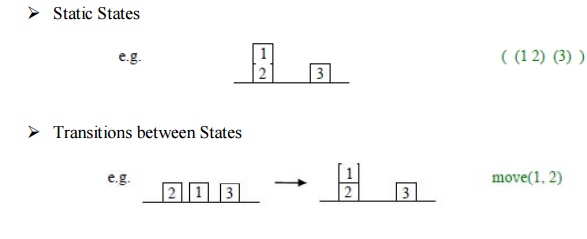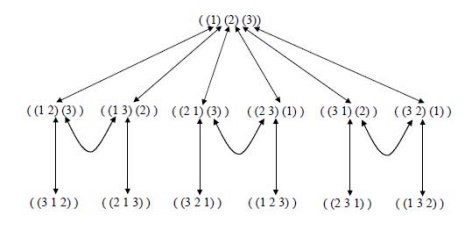Chapter: Artificial Intelligence
Search and Control Strategies
Search and Control Strategies:
Problem
solving is an important aspect of Artificial Intelligence. A problem can be
considered to consist of a goal and a set of actions that can be taken to lead
to the goal. At any given time, we consider the state of the search space to
represent where we have reached as a result of the actions we have applied so
far. For example, consider the problem of looking for a contact lens on a
football field. The initial state is how we start out, which is to say we know
that the lens is somewhere on the field, but we don’t know where. If we use the
representation where we examine the field in units of one square foot, then our
first action might be to examine the square in the top-left corner of the
field. If we do not find the lens there, we could consider the state now to be
that we have examined the top-left square and have not found the lens. After a
number of actions, the state might be that we have examined 500 squares, and we
have now just found the lens in the last square we examined. This is a goal
state because it satisfies the goal that we had of finding a contact lens.
Search is
a method that can be used by computers to examine a problem space like this in
order to find a goal. Often, we want to find the goal as quickly as possible or
without using too many resources. A problem space can also be considered to be
a search space because in order to solve the problem, we will search the space
for a goal state.We will continue to use the term search space to describe this
concept. In this chapter, we will look at a number of methods for examining a
search space. These methods are called search methods.
The
Importance of Search in AI
It has already become clear that many of the tasks
underlying AI can be phrased in terms of a search for the solution to the
problem at hand.
Many goal based agents are essentially problem
solving agents which must decide what to do by searching for a sequence of
actions that lead to their solutions.
For production systems, we have seen the need to
search for a sequence of rule applications that lead to the required fact or
action.
For neural network systems, we need to search for
the set of connection weights that will result in the required input to output
mapping.
Which
search algorithm one should use will generally depend on the problem domain?
There are four important factors to consider:
Completeness – Is a solution guaranteed to be found
if at least one solution exists?
Optimality – Is the solution found guaranteed to be
the best (or lowest cost) solution if there exists more than one solution?
Time Complexity – The upper bound on the time required
to find a solution, as a function of the complexity of the problem.
Space Complexity – The upper bound on the storage
space (memory) required at any point during the search, as a function of the
complexity of the problem.
Preliminary concepts
Two
varieties of space-for-time
algorithms:
Input enhancement — preprocess the input (or its
part) to store some info to be used later in solving the problem
o
Counting
for sorting
o
String
searching algorithms
Prestructuring — preprocess the input to make
accessing its elements easier
·
Hashing
§ Indexing
schemes (e.g., B-trees)
State Space Representations: The state
space is simply the space of all possible
states, or configurations, that our system may be in. Generally, of course,
we prefer to work with some convenient representation of that search space.
There are
two components to the representation of state spaces:

State Space Graphs: If the
number of possible states of the system is small enough, we can represent all of them, along with the transitions between
them, in a state space graph, e.g.

Routes through State Space: Our
general aim is to search for a route, or sequence of transitions, through the state space graph from our initial state
to a goal state.
Sometimes
there will be more than one possible goal state. We define a goal test to
determine if a goal state has been achieved.
The
solution can be represented as a sequence of link labels (or transitions) on
the state space graph. Note that the labels depend on the direction moved along
the link.
Sometimes
there may be more than one path to a goal state, and we may want to find the
optimal (best possible) path. We can define link costs and path costs for
measuring the cost of going along a particular path, e.g. the path cost may
just equal the number of links, or could be the sum of individual link costs.
For most
realistic problems, the state space graph will be too large for us to hold all
of it explicitly in memory at any one time.
Search Trees: It is helpful to think of the
search process as building up a search tree
of routes through the state space graph. The root of the search tree is the
search node corresponding to the initial state.
The leaf
nodes correspond either to states that have not yet been expanded, or to states
that generated no further nodes when expanded.

Related Topics